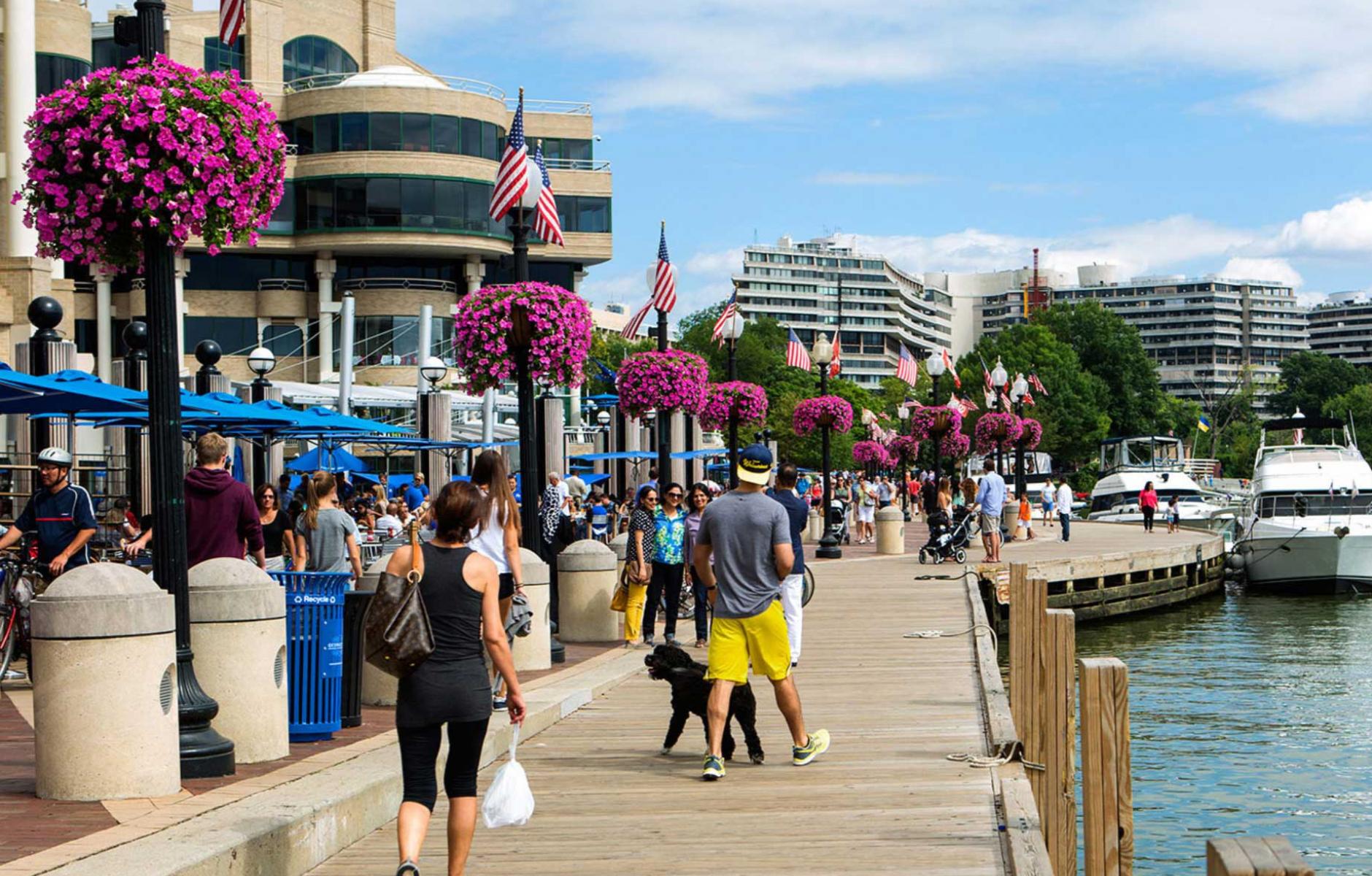
DC’s three waterfront developments
The Congress for the New Urbanism DC Chapter and the City Tavern Preservation Foundation collaborated to present a series of five lectures on the history and architecture of Georgetown and Washington, DC. The series commenced on September 7 and concluded on November 2.
On October 19, the panel discussion focused on three waterfront developments built over the past 50 years. The event was moderated by Bob Peck, a lifelong Washingtonian who served as the Commissioner of Public Buildings Service for the U.S. General Services Administration (GSA) from 2009 to 2012. Bob was instrumental in convincing the various governmental agencies to allow public access to the water, and permit commercial and residential uses along the DC waterfront.
A half-century ago, a visitor to the Nation’s Capital would have found it difficult to understand that two rivers bounded Washington’s governmental and commercial core. With rivers longer needed for transportation, many cities had turned their back on these important waterways, allowing them to be polluted by industrial uses and sewage. In Washington, access to the river’s edge was minimal and purposely unwelcoming.

The National Park Service had jurisdiction over lands adjacent to the rivers and was reluctant to have commercial activity along the Anacostia and Potomac rivers. Georgetown, the furthest upriver town on the Potomac, thrived as a commercial port until the beginning of the 20th Century. By 1900, larger vessels could not access Georgetown’s port, and the abandoned riverfront transformed to predominantly industrial uses. By 1960, most industries had been decommissioned and relocated, and plans were being discussed to add a highway along the river's edge and limit waterfront development to office uses.
The Washington Harbor development was the first project to permit public access to the Georgetown riverfront when completed in 1986. Panelist Dhiru Thadani, president of CNU’s DC Chapter and organizer of the lecture series, recounted the history of Georgetown’s waterfront and the ordeal of getting Washington Harbor built, after years of litigation between the Georgetown Citizens Association, land owners, developers, and government agencies.

Panelist Michael Stevens had served as executive director of the Capitol Riverfront Business Improvement District (BID) in the Southeast waterfront area of Washington, D.C. He presented The Yards, the city’s rapidly developing mixed-use riverfront neighborhood. The project's economic success in a disinvested city quadrant is a testament to the power of water as a magnet for social interaction.

Panelist Matt Bell, principal at Perkins Eastman, presented the newest multibillion-dollar mixed-use waterfront development in Southwest Washington, The Wharf, for which the firm was the project's lead designer. The Wharf is a mile-long development along the Washington Channel of the Potomac River, now populated by restaurants, retail stores, residences, and businesses that are afforded monumental views along the river’s edge.

These three projects have transformed perceptions and reestablished Washington, DC, as a waterfront city. The abundance, variety, easy access, and high quality of new public spaces within these developments have made the two rivers a destination and a welcomed addition to the many amenities in the nation’s capital.




